SYMBIOTIC RELATIONSHIP BETWEEN PR & SOCIAL MEDIA
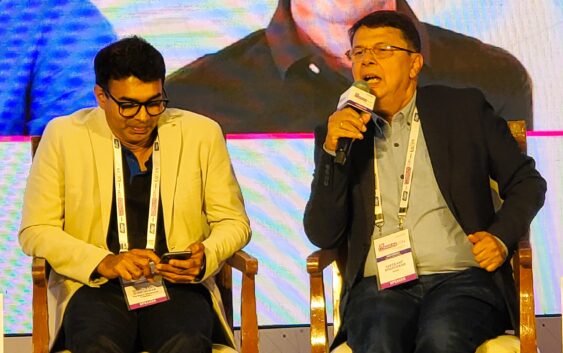
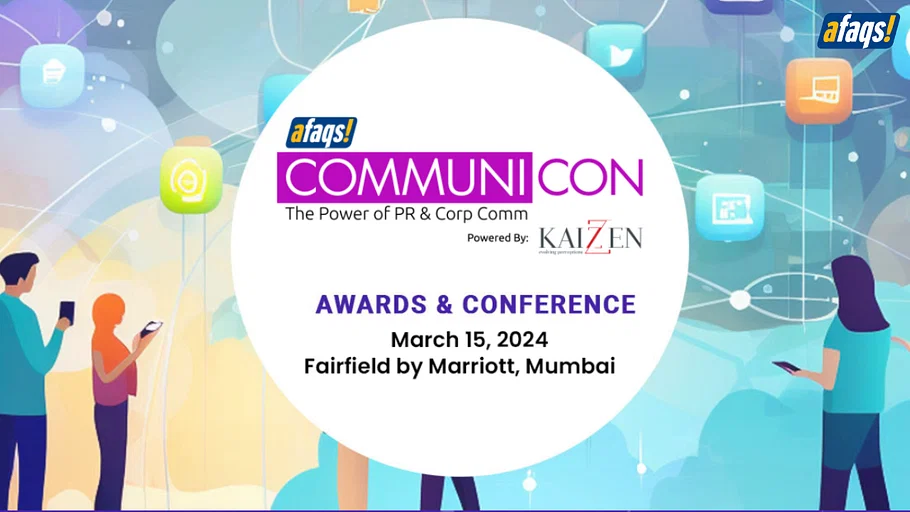
The growth of internet and social media has altered the public relations industry. Aside from the increased frequency and speed of reaction, brands and corporations may now communicate directly with all stakeholders, whether they are consumers, investors, or the general public. The fantastic thing is that consumers frequently want to receive information directly from companies. This has allowed public relations firms to expand their conventional function by entering the content development and delivery market.
The afaqs! CommuniCon Awards & Conference 2024 was held on 15 March 2024 at the Fairfield by Marriott, Mumbai. The discussions and awards were both designed to capture all of the developments that are transforming the field of public relations and business communications. The Awards were intended for PR companies, brand marketers, and other types of marketing agencies who manage public relations for their customers.
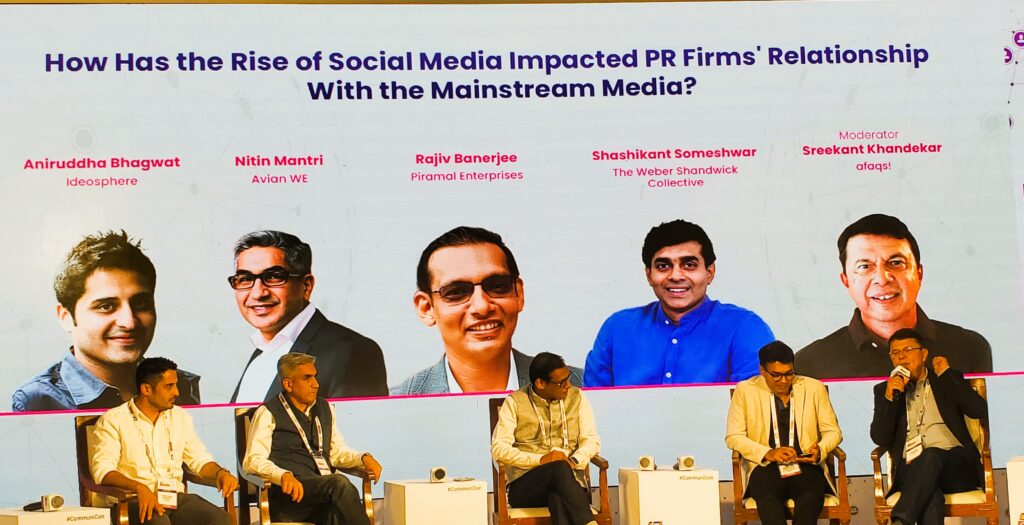
The panel discussion on How Has The Rise Of Social Media Impacted PR Firms’ Relationship With The Mainstream Media?, moderated by Sreekant Khandekar – Co-Founder & Chief Executive Officer of afaqs! And the panellists – Shashikant Someshwar – Managing Director – The Weber Shandwick Collective, Rajiv Banerjee – Group Head – Corporate Communications – Piramal Enterprises, Aniruddha Bhagwat – CEO & Co-Founder – Ideosphere, Nitin Mantri – Group CEO – Avian WE, this discussion among top industry professionals and experts at Communicon 2024, powered by Kaizzen and organised by afaqs!, shed light on the dynamic transformations and strategic adaptations taking place in the PR world as it relates to various media. In the ever-changing world of public relations (PR), the symbiotic link between mainstream media and social media is becoming increasingly important in creating communication strategies for corporations and organisations.
Banerjee of Piramal Enterprises underlined the democratising impact of social media on communication processes. He observed that social media frequently takes precedence over conventional media in conveying messages to target audiences, highlighted the rising reliance on digital channels for brand marketing.
Mantri of Avian WE emphasised the long-term relevance of earned media in public relations efforts. While acknowledging the growing impact of social media, Mantri highlights the continuing importance of conventional media contacts and narrative approaches in generating awareness for clients.
“The heart of any PR firm is earned media and that has not changed. Creating your own content can give you a lot of earned media. Our relationship with traditional media hasn’t changed. We still talk to journalists, pitch stories, talk to clients.”
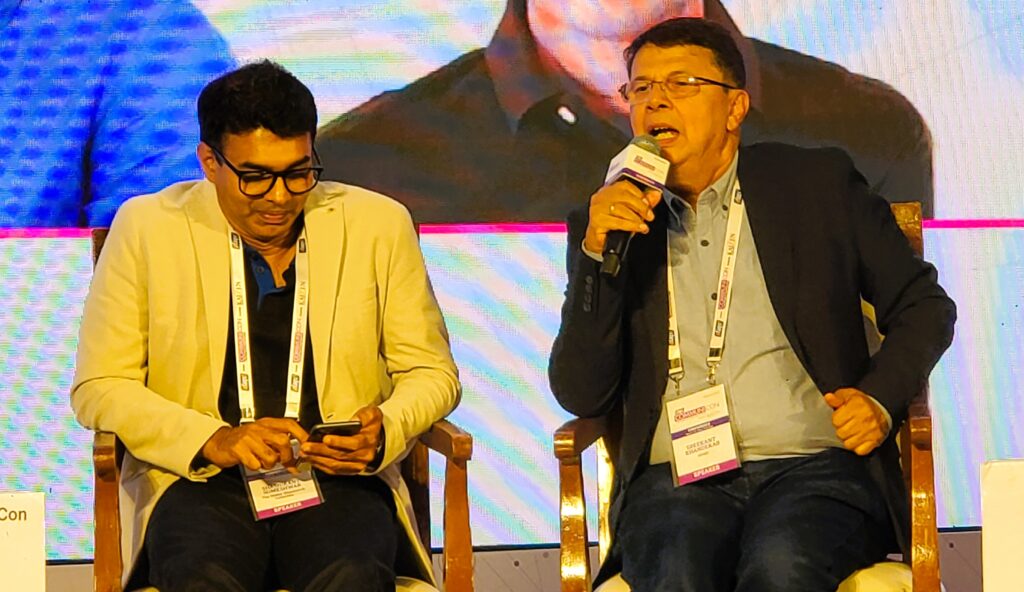
Bhagwat of Ideosphere emphasised the convergence of credibility across conventional and social media outlets. Bhagwat highlighted the growing emphasis on message consistency and intentionality, with strategic messaging driving media choices rather than vice versa.
“What has happened in PR is that there is more focus on the message you are going to give across rather than what media you are choosing. The message defines what media we are going to. For example, we are getting more intentional in terms of the message we are putting across and refraining from adjectives in our content. The expansion of the media is making us more responsible, it’s holding us more accountable and it’s a good thing,” he says.
Someshwar of The Weber Shandwick Collective addressed the rise of genre-specific media and its impact on focused marketing. He emphasised the need of a ‘earned media first’ strategy in public relations. He also mentioned that focusing solely on social media may not be the best strategy for corporations and PR agency.
“According to a report by Oxfam, 70% of India still has issues with connectivity. In that realm, if you only operate for social media, you will go out of business very soon. Social media has allowed PR agencies to get more creative, using different messaging. For example, the Bill Gates-Chaiwala video is a great example of using social media to get your message across which was ‘innovation finding innovation in India’. He was able to give out the message in a two-minute interview rather than a video interview. I think agencies have started adapting and being more creative,” he added.
Further the discussion was on Do PR firms need mainstream media much less than before? Also, has the relationship changed in other ways? A thorough examination of how the relationships between PR and conventional media have changed since the introduction of social media.
The discussion also looked into the changing nature of press conferences in today’s PR industry. According to leaders, press conferences are still crucial, but they play a more nuanced function.
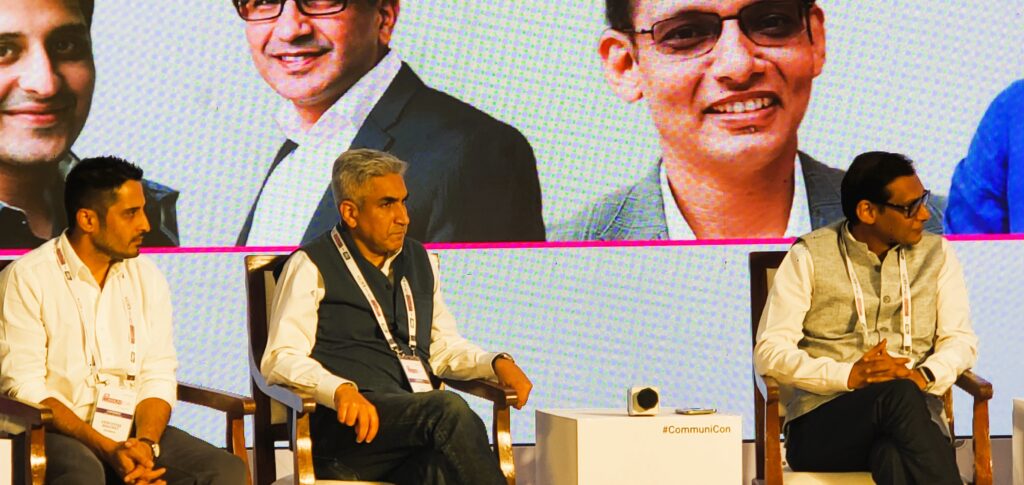
According to Bhagwat of Avian, the aim of today’s press conference is to announce something that clever and capable people (journalists) can ask questions about, so increasing the credibility of the message.
“The business of public relations or Communications has become far more complex than it was 20 years ago. There are multiple mediums, there’s traditional media, there’s social media, forums you can reach out to, etc,” concluded Mantri of Avian.
Girish B’s view –
The relationship between PR firms and mainstream media has changed due to the rise of social media and the rise of social media has impacted PR firms’ relationship with mainstream media.
Traditionally, PR firms relied on mainstream media to get their clients messages out to the public. This meant press releases, conferences, and waiting for journalists to pick up their stories. Today, social media allows PR firms to bypass traditional media and connect directly with their target audiences. By strategically using social media, PR firms effectively target the right audiences, build brand awareness, and achieve positive PR outcomes for their clients, by using various communication strategies to create a positive perception and build relationships with key audiences.
Social media has also democratized communication, meaning that anyone can now share information with a large audience. This has made it more important for PR firms to be able to create and distribute their own content, such as blog posts and social media posts. However, mainstream media is still important for PR firms. Earned media coverage in a traditional media outlet can still be very valuable for a brand’s reputation. So, while the relationship between PR firms and mainstream media has changed, it has not disappeared.
Social media can be a double-edged sword during a crisis. It can spread information rapidly, but also misinformation. Social media can be a useful tool in crisis communication: Because social media moves so quickly, it can be a valuable tool for communicating with the public during a crisis. PR firms can use social media to get their message out quickly and to correct any misinformation that is circulating. By using social media effectively, you can mitigate the damage caused by a crisis and even emerge from it with a stronger reputation.
How social media has changed the way PR professionals work is transformative. Social media has made it necessary for PR professionals to respond to customer inquiries quickly. It has also given rise to the influencer, a new type of citizen journalist. Social media has made PR more affordable for small businesses. However, it has also blurred the lines between marketing and PR.
The importance of integration between mainstream media and social media, as synergy is Key. Merging mainstream media with social media amplifies reach and engagement. News stories can be amplified on social media, and audience feedback can fuel future content for both mediums.
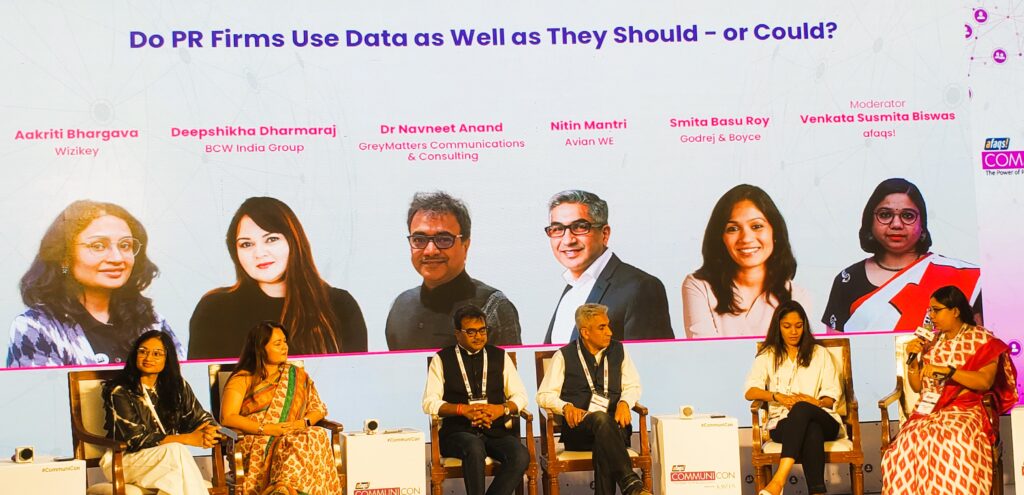
In the panel discussion Do PR Firms Use Data As Well As They Should – Or Could?, industry professionals discussed the relevance of data in assessing PR performance, as well as the need of data literacy.
In today’s environment, data is ubiquitous, and marketers are taking use of it. Digital and social media have evolved into a centre of real-time discussions that companies actively monitor in order to keep in touch with their target audience. Meanwhile, conventional media remains vital, with online copies of newspapers joining the mix.
The session was moderated by Venkata Susmita Biswas, executive editor at afaqs!, and the panellists were – Dr Navneet Anand, founder and director of GreyMatters Communications & Consulting; Nitin Mantri, group CEO of Avian WE; Aakriti Bhargava, co-founder of Wizikey; Deepshikha Dharmaraj, chief executive officer of BCW India Group; and Smita Basu Roy, head of corporate communications at Godrej & Boyce.
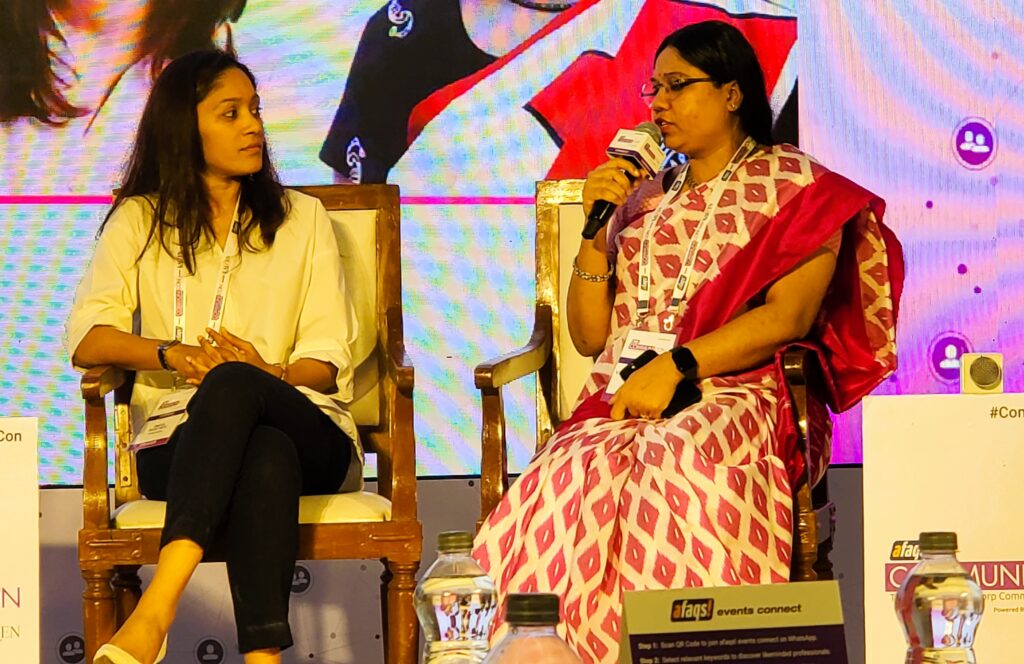
The veterans emphasised the need of using big data to monitor brand or client mentions on social media, in news stories, and from other sources. This makes it useful for spotting trends, influencers, and evaluating the effectiveness of PR operations.
But with all of this data floating about, there’s a new challenge: finding out how to use it all efficiently. Public relations (PR) firms are still figuring out the best methods to traverse this flood of information.
Biswas began the event by questioning if PR agencies are focusing on useful data amidst the massive quantity of information accessible online, and whether there is any clarity on how PR effectiveness is assessed, if at all. According to the experts, everyone requires data for their work, and insights and analysis are also growing more crucial.
Roy felt that there is a plenty of data, and that the only missing component is the capacity to funnel down. She said, “At this point, we are on par with several PR agencies advocating for more effective utilisation of data, not just from a reactive measurement of success, but also as a proactive tool that carries immense potential.”
Meanwhile, Mantri believed that during the planning stage, one should consider many types of data rather than just one. It must notify a brand or agency about the campaign it will launch. “Data can be collected from various sources like media cells, social media, and other different forums. I think the challenge that all of us face as organisations whether it is agencies or clients is that data is not cheap. One needs data to inform before they do any work,” he emphasised.
Data literacy presents a variety of challenges, including comprehending complex data concepts and effectively communicating data insights, as well as ensuring data quality, managing information overload, providing adequate tools and resources, understanding data privacy concerns, and overcoming resistance to data-driven decision making.
The availability of data can pose a problem – there is too much of it. Have PR firms settled on how it can be best used?
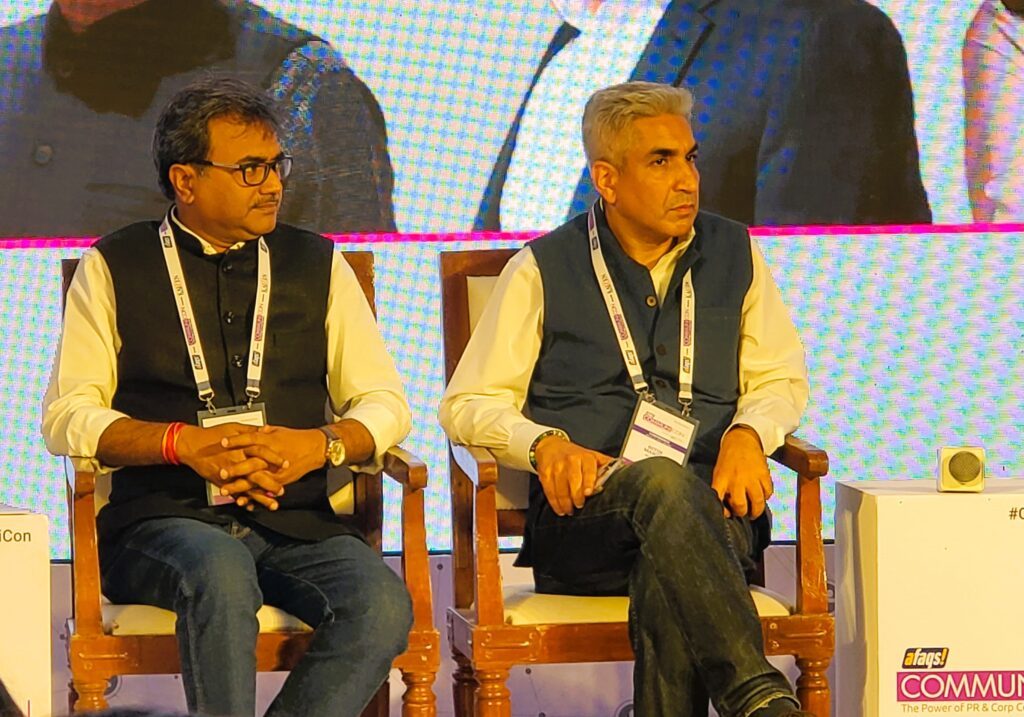
Dharmaraj highlighted the importance of statistics by discussing Edward Bernays, an American pioneer in public relations in the 1900s. She emphasised Bernays’ view of public relations as a scientific profession that necessitates a knowledge of human behaviour and facts in order to develop effective messaging and tactics.
“We do a lot of learning and development in our organisations. We have to spend time, effort, and money on bringing this literacy in and changing the mindset to data. Unfortunately, a lot of young kids get scared when they see data thinking it is maths. We need to break that mindset and say it is the power of our roles to be able to do this. PR is a very special craft and sometimes you just sort of put the data down, write a press release, put it out there, and pray to God,” she said.
Furthermore, Dr. Anand underlined the significance of human interaction in data. He noted that, while many individuals are involved in analytics, the application of human brain and thought is what actually matters; otherwise,, “we are all drowned by the enormity of the data that is present.”
“I am very intrigued and excited to see the kind of data that is provided by some of the data analytics tools, but it does not always translate into actionable elements for us. Therefore, this is where human intervention comes into play,” he highlighted.
The introduction of AI has significantly simplified operations for businesses, making jobs more accessible and efficient than ever before. Looking back on the previous two years of employing it, Bhargava believes that the impact on time and efficiency that a company, agency, or individual will get from using AI is spectacular and exponential.
“In the coming future, which is not more than one year from here, software will be able to bring in other businesses’ software through APIs and say it made an announcement and this is how the traffic changed. We already do that at Wizikey. The interconnectivity of data is not very far away and that is why we are fortunate to be in these times because we do not have to live in isolation of the marketing team anymore,” she said.
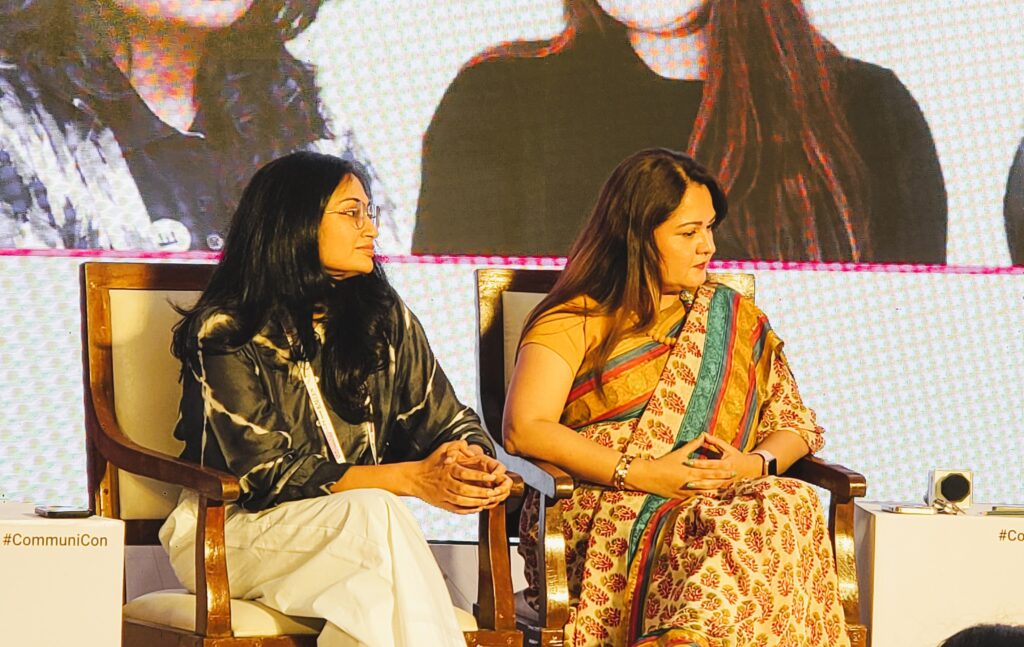
As mentioned, Edward Louis Bernays who is widely recognized as the “father of public relations” due to his groundbreaking work in the early 1920s, was a pioneer in applying social sciences, particularly psychology, to understand and influence public opinion. Bernays himself referred to public relations as a “science” and even titled one of his influential books “The Engineering of Consent” (1955). This title reflects his belief that PR could be a systematic approach to shaping public opinion through understanding human behavior.
Girish B view –
PR firms take raw data and transform it into actionable insights for their social media strategies and they refine data:
- Focus & Filter: They identify the data points relevant to their target audience and campaign goals (e.g., demographics, engagement metrics, brand sentiment).
- Clean & Clear: They ensure data accuracy and eliminate inconsistencies. This helps paint a clear picture of what’s working and what needs improvement.
- Storytelling Power: They translate data into compelling narratives that resonate with their target audience on social media.
Data is key for PR firms to identify and target specific audience needs on social media and data drives success for PR firms on social media. They need to identify and use data specific to their target audience’s needs.
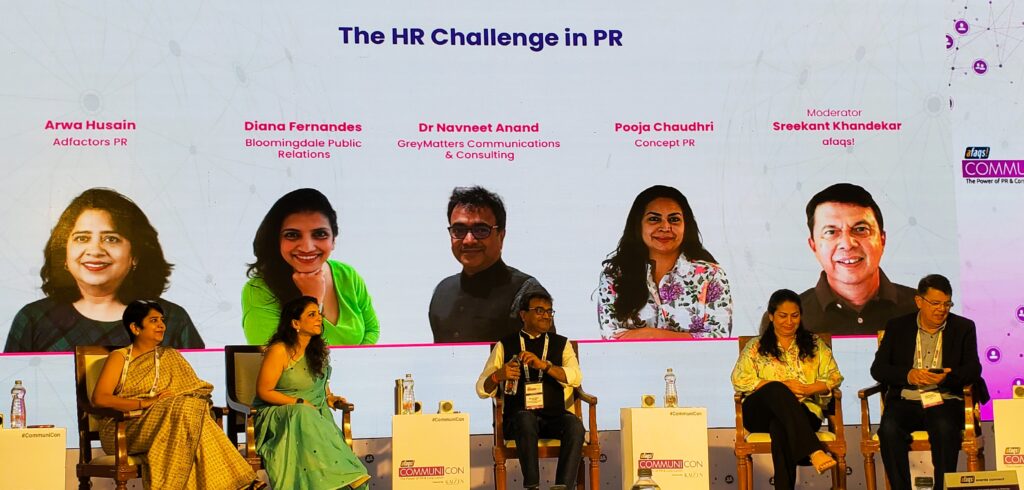
Public relations businesses are failing to attract talent, despite the fact that many of its personnel are moving to corporate communications. What can be done? In the panel discussion – The HR Challenge In PR, key industry leaders dissected this growing predicament. The panel included Pooja Chaudhri, executive director, Concept PR; Diana Fernandes, founder & CEO, Bloomingdale Public Relations; Dr Navneet Anand, founder & director, GreyMatters Communications & Consulting; and Arwa Husain, director, Adfactors PR. The discussion was moderated by Sreekant Khandekar, co-founder & chief executive officer, afaqs!.
Human Resources (HR) practitioners in the Public Relations (PR) and Corporate Communications areas confront several issues, many of which have been compounded by the evolution of PR tactics, notably in the aftermath of the COVID-19 epidemic.
One of the most significant issues is acquiring and retaining talent. With the fast digitisation of communication channels and the growing demand for various skill sets, HR departments in public relations and corporate communications are struggling to recruit and retain top personnel capable of navigating the changing media landscape.
The challenge is the evolving nature of business and the kind of talent that we are looking for. You now have data analysts, you have lawyers, and in some cases, you require investment bankers as well. So, the whole paradigm has shifted.
Arwa Husain, the director of Adfactors PR
Arwa Husain, head of Adfactors PR, expressed issues about the word “HR,” calling for a more human-centric approach to assessing employee happiness and well-being. Husain noted the changing environment of talent requirements, highlighting the infusion of professionals from varied backgrounds such as journalism, data analytics, law, and finance, necessitating a larger range of abilities in the public relations field.
She said, “The challenge is the evolving nature of business and the kind of talent that we are looking for. You now have data analysts, you have lawyers, and in some cases, you require investment bankers as well. So, the whole paradigm has shifted.”
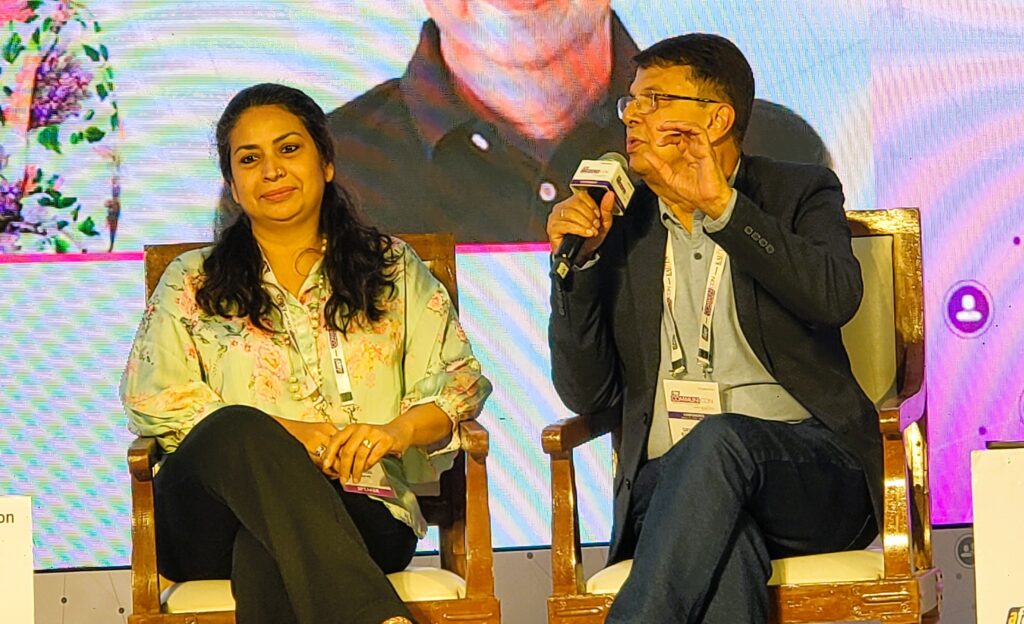
Diana Fernandes, founder and CEO of Bloomingdale Public Relations, highlighted the problems created by Generation Z’s entry into the workforce, highlighting their unique needs for mental wellbeing, work-life balance, and hybrid work models. Fernandes emphasised the necessity for HR departments to adapt to changing preferences and meet the different demands of younger employees.
Today, there is an institution offering professional courses in almost every major city of the country, which should give us reasons to believe that we have a more qualified talent pool than in the past. Unfortunately, that is not true.
Dr. Navneet Anand, founder & director of GreyMatters Communications & Consulting
Dr. Navneet Anand, founder and director of GreyMatters Communications & Consulting, highlighted worries regarding the quality of talent entering the PR sector, despite the growth of professional courses and schools that provide PR education.
He said, “Today, there is an institution offering professional courses in almost every major city of the country, which should give us reasons to believe that we have a more qualified talent pool than in the past. Unfortunately, that is not true.”
Anand bemoaned the presence of a significant number of insufficiently qualified individuals in the business, emphasising the significance of tackling this problem collectively.
Today, when we have all that knowledge, and we have all those more people joining in, there is no zest for life. There’s no thirst for knowledge.
Pooja Chaudhri, executive director of Concept PR
Pooja Chaudhri, executive director of Concept PR, focused on the evolution of the public relations scene over the last several decades, stressing the transition from a time when PR education was limited to the current era of copious information and access to expertise.
She says, “Back in the day, there was nothing called PR and communications taught to us in colleges. you just did a BA, BCOM or BSC. Today, when we have all that knowledge, and we have all those more people joining in, there is no zest for life. There’s no thirst for knowledge.”
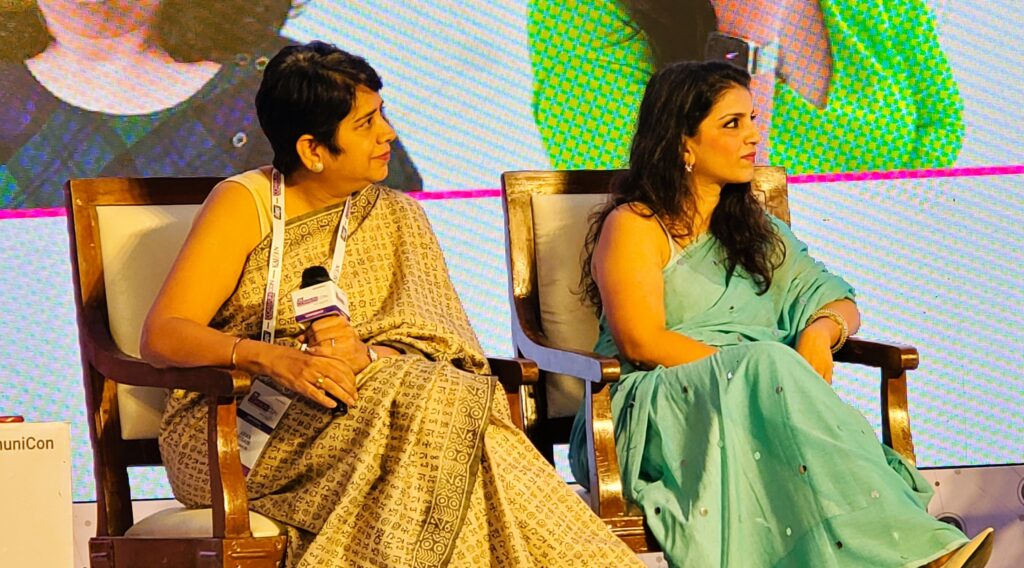
Chaudhri saw a lack of interest and desire for learning among today’s public relations practitioners, which he attributed to the convenience of acquiring information without diving further into its complexities.
The panellists also talked on the changing skill sets needed in the PR sector, highlighting the increased significance of creativity, innovation, and flexibility. Anand emphasised the PR industry’s intensive knowledge-driven character, with organisations looking for professionals who can navigate a competitive marketplace using fresh ideas and strategic thinking.
Fernandes emphasised the shifting recruiting procedures in PR agencies, which place a greater focus on diversity and obtaining talent from unorthodox sources.
She says, “While there are of course institutes which train students to be in the PR field, the way agencies like ours hire has totally changed. Hiring from diverse places, and diverse talents is helping us because we’re sort of breaking the traditional route of mass media or mass communication.”
The panel discussion highlighted the multiple problems that HR professionals in the public relations sector face, such as talent acquisition and retention as well as meeting the changing demands and preferences of a diverse workforce. As public relations evolves, human resources departments must adapt new ways to recruit, develop, and retain top talent while cultivating a culture of innovation, diversity, and constant learning.
Girish B view –
In the past, talent acquisition for PR firms was easier because there were fewer options for young people entering the workforce. Today, young people have many more choices due to the growth of social media and digital content creation. There exists a gap between the skills that young people are acquiring at educational institutions and the skills that PR firms need.
As PR firms are looking for young people who are curious, adaptable, and eager to learn, but young people today are not as hungry or willing to work hard as previous generations. PR firms should consider psychology students because of their knowledge of human behavior.
The awards were held in the evening.

